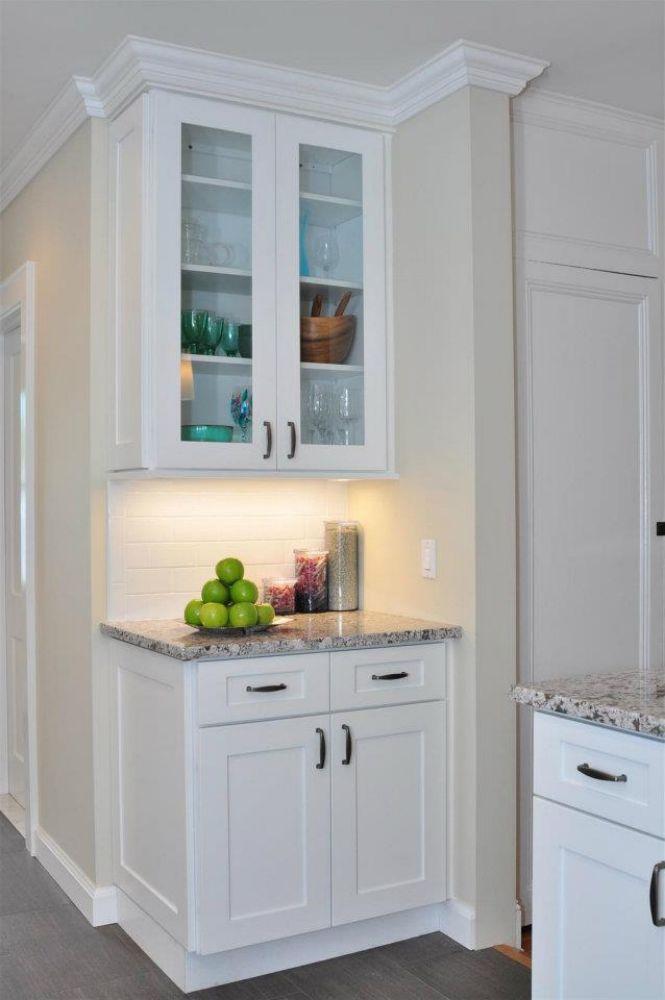Understanding the Importance of Tips for Reducing Toxins at Home
Creating a healthy home environment begins with awareness. While most people focus on visible cleanliness—dusting, vacuuming, and organizing—many overlook the hidden toxins that can impact long-term health. Chemicals found in furniture, cabinetry, flooring, paints, and even cleaning products can continuously release harmful compounds into your indoor air.
These toxins, also known as volatile organic compounds (VOCs), may cause respiratory issues, allergies, and other chronic health conditions over time. That’s why implementing effective tips for reducing toxins at home is essential for maintaining a safer living space. Choosing certified, low-emission furnishings like Tips for reducing toxins at home can play a significant role in improving your indoor environment and ensuring long-term wellness for your family.
Identifying the Hidden Sources of Household Toxins
The first step to reducing toxins at home is understanding where they come from. Many everyday materials and products emit chemicals without noticeable odor or immediate symptoms. Common culprits include:
-
Cabinetry and furniture made from particleboard or MDF containing formaldehyde.
-
Paints and finishes that emit VOCs long after application.
-
Synthetic carpets and flooring that release phthalates and flame retardants.
-
Cleaning products that contain ammonia, chlorine, or artificial fragrances.
-
Air fresheners and candles that emit paraffin fumes and synthetic scents.
Identifying and addressing these sources allows you to make informed choices that significantly reduce indoor pollution.
Improving Indoor Air Quality for a Healthier Home
Indoor air pollution can be up to five times worse than outdoor air, according to environmental health studies. Poor ventilation combined with chemical emissions from furnishings, cleaners, and building materials leads to accumulation of toxins.
To improve air quality:
-
Increase ventilation by opening windows and using exhaust fans.
-
Install air purifiers with HEPA and activated carbon filters to capture allergens and VOCs.
-
Use houseplants like spider plants, snake plants, and peace lilies to naturally absorb toxins.
-
Clean air ducts and replace HVAC filters regularly to prevent buildup of dust and pollutants.
Fresh air circulation and filtration are key to maintaining a cleaner, healthier home environment.
Choosing Low-VOC Paints and Finishes
Paints and varnishes are among the most common sources of VOCs inside homes. These chemicals can linger in the air for months, causing headaches, fatigue, and breathing issues.
When renovating or redecorating, select low-VOC or zero-VOC paints. These eco-friendly alternatives provide excellent color coverage without releasing harmful compounds. Similarly, choose water-based finishes for furniture and cabinetry instead of solvent-based options.
Applying these coatings in well-ventilated areas and allowing proper curing time will further minimize exposure to toxins.
Selecting Safe and Non-Toxic Furniture and Cabinetry
Furniture and cabinetry often go unnoticed as sources of indoor pollution, but they can be major contributors. Many mass-produced cabinets are built with adhesives containing formaldehyde or coated in finishes that emit VOCs.
To reduce exposure, choose Greenguard Gold-certified or formaldehyde-free products. Cabinets made from solid wood, bamboo, or other low-emission materials are far healthier alternatives. Investing in certified non-toxic cabinetry, like those found in Greenguard Gold Certified Custom Cabinets, ensures your home remains beautiful and safe.
This single choice can have a significant long-term effect on your home’s overall air quality.
Replacing Synthetic Carpets with Natural Flooring
Carpets made from synthetic fibers like nylon or polyester often contain flame retardants, adhesives, and chemical dyes that can off-gas toxins for years. Additionally, carpets trap dust, mold, and allergens that aggravate respiratory conditions.
To reduce toxins, consider replacing synthetic carpets with natural alternatives such as:
-
Wool rugs (naturally flame-resistant and chemical-free)
-
Bamboo or cork flooring (renewable and low-emission)
-
Hardwood floors finished with water-based sealants
If replacing flooring isn’t an option, regular vacuuming with HEPA filters and professional deep cleaning will help minimize buildup of pollutants.
Using Natural Cleaning Products to Minimize Chemical Exposure
Many conventional cleaning products contain harsh chemicals that contribute to indoor pollution. These substances may leave behind residues that irritate the skin and respiratory system.
To reduce chemical exposure, replace them with natural, non-toxic alternatives. Safe cleaning solutions can be made at home using ingredients like:
-
White vinegar for disinfecting surfaces.
-
Baking soda for scrubbing and deodorizing.
-
Lemon juice for dissolving grease.
-
Castile soap for general cleaning.
Natural cleaners work effectively without introducing toxins, protecting your family and the environment alike.
Avoiding Artificial Fragrances and Air Fresheners
Air fresheners, scented candles, and fabric sprays may seem harmless, but they often contain phthalates and petroleum-based chemicals. These compounds are linked to hormonal imbalances and respiratory irritation.
For a safer alternative:
-
Use essential oil diffusers with pure, natural oils like lavender or eucalyptus.
-
Simmer herbs and citrus peels on the stove to naturally scent your home.
-
Place activated charcoal or baking soda around the house to neutralize odors.
By eliminating synthetic fragrances, you can improve both the freshness and safety of your indoor environment.
Managing Moisture and Preventing Mold Growth
Moisture and poor ventilation can lead to mold and mildew, which release spores and mycotoxins that harm respiratory health. Bathrooms, basements, and kitchens are especially vulnerable.
To prevent mold:
-
Fix leaks immediately.
-
Use dehumidifiers to control humidity levels.
-
Install exhaust fans in moisture-prone areas.
-
Regularly clean areas under sinks, around windows, and behind appliances.
Mold prevention not only reduces allergens but also helps preserve cabinetry and building materials over time.
Choosing Healthier Kitchen Materials
The kitchen is often the heart of the home—and also a hotspot for toxins. Cabinetry, countertops, and flooring can all release harmful emissions, especially in areas with limited ventilation.
To create a healthier kitchen:
-
Select non-toxic, Greenguard Gold-certified cabinets.
-
Choose quartz, stainless steel, or solid wood countertops sealed with low-VOC coatings.
-
Install ventilation hoods that effectively remove fumes from cooking.
-
Avoid plastic containers and use glass or stainless steel instead.
Each of these small adjustments contributes to a cleaner, more toxin-free kitchen environment.
Filtering Tap Water for Safer Drinking and Cooking
Even if your tap water meets local safety standards, it may still contain trace amounts of lead, chlorine, pesticides, or other contaminants. Installing a water filtration system can significantly improve the quality of your drinking and cooking water.
Options include:
-
Activated carbon filters for basic purification.
-
Reverse osmosis systems for comprehensive contaminant removal.
-
Whole-house filtration systems to treat all water sources in your home.
Cleaner water reduces toxin intake and promotes better hydration and overall health.
Reducing Plastic Usage in Daily Life
Plastics are one of the most pervasive sources of toxins at home. Many plastic products contain bisphenol A (BPA) or phthalates, which can leach into food and beverages, especially when heated.
To minimize exposure:
-
Replace plastic containers with glass, ceramic, or stainless steel.
-
Avoid microwaving food in plastic containers.
-
Use beeswax wraps instead of plastic wrap.
-
Purchase products packaged in glass or paper when possible.
These simple lifestyle changes greatly reduce daily chemical exposure and environmental waste.
Incorporating Plants to Naturally Purify Indoor Air
Nature offers one of the simplest ways to detoxify your home—houseplants. Certain plants are known for their air-purifying abilities, helping remove VOCs like formaldehyde and benzene from indoor air.
Excellent plant choices include:
-
Aloe vera – removes formaldehyde and benzene.
-
Spider plant – filters carbon monoxide and xylene.
-
Peace lily – absorbs airborne mold spores.
-
Snake plant – converts CO₂ into oxygen even at night.
Placing a few of these plants throughout your home adds beauty while promoting cleaner air.
Practicing Safe Renovation and Remodeling
Home renovations often release toxins from building materials, adhesives, and paints. Planning ahead can help minimize health risks.
When renovating:
-
Use low-VOC paints, adhesives, and finishes.
-
Ensure proper ventilation during and after the project.
-
Seal construction areas to prevent dust from spreading.
-
Choose certified materials like Greenguard Gold cabinetry and eco-friendly flooring.
A well-planned renovation ensures you improve your home without compromising your family’s health.
Replacing Old Mattresses and Upholstery
Older mattresses, couches, and upholstered furniture often contain flame retardants, formaldehyde, and polyurethane foam that off-gas over time. These chemicals can affect sleep quality and respiratory health.
When upgrading furniture, select natural materials such as:
-
Organic cotton or wool fabrics.
-
Natural latex or coconut coir cushions.
-
Flame retardant-free certifications.
These non-toxic alternatives provide comfort without harmful side effects, supporting better sleep and overall wellness.
Creating a Non-Toxic Cleaning Routine
Maintaining a toxin-free home goes beyond switching products—it involves adopting healthier cleaning habits. Use microfiber cloths to trap dust without chemical sprays, mop floors with hot water and natural cleaners, and wash linens with fragrance-free detergent.
Avoid aerosols and harsh disinfectants unless absolutely necessary. Natural cleaning doesn’t just eliminate toxins; it also protects surfaces, extends furniture life, and supports a healthier ecosystem inside your home.
Prioritizing Ventilation and Air Flow Year-Round
Good air circulation prevents buildup of pollutants and ensures your home feels fresh. Even during colder months, it’s important to occasionally open windows and allow fresh air exchange.
Install ceiling fans or air exchangers to maintain airflow, and consider energy-efficient air purification systems that continuously monitor and improve air quality. Ventilation plays a critical role in dispersing VOCs and maintaining comfort throughout every season.
Educating Your Family on Healthier Living Habits
Creating a toxin-free home is a family effort. Teach everyone about safe product choices and daily habits that support wellness. Encourage children to wash hands after play, avoid plastics, and respect indoor plants as part of the home’s air-cleaning system.
When everyone participates, it becomes easier to maintain a cleaner, healthier, and more sustainable lifestyle over time.
The Long-Term Benefits of a Low-Toxin Home
Reducing toxins at home not only improves daily comfort but also contributes to long-term wellness. Clean air, fewer allergens, and non-toxic materials can lead to better sleep, stronger immunity, and reduced respiratory irritation.
Moreover, sustainable living choices such as choosing certified cabinetry, natural flooring, and eco-friendly products benefit both your family and the planet. A healthier home environment supports physical health, mental clarity, and emotional well-being.
Conclusion
Implementing these tips for reducing toxins at home is one of the most valuable investments you can make for your family’s health. By identifying and eliminating hidden pollutants—from harmful finishes and synthetic materials to chemical-laden cleaning products—you create a space that fosters wellness and peace of mind.
Choosing eco-certified furnishings like Greenguard Gold Custom Cabinets, natural flooring, and low-VOC paints transforms your home into a sanctuary of safety and sustainability. Every small choice adds up, leading to cleaner air, improved health, and a more harmonious living environment for years to come.

